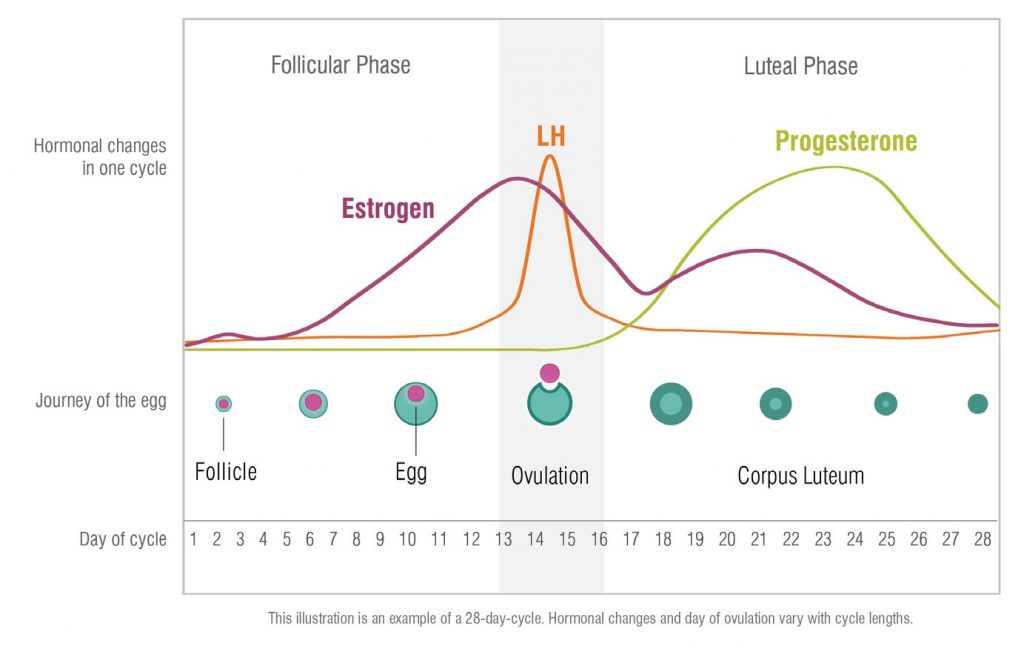Menstrual Cycle Mapping
Menstrual cycle mapping consists of a month-long assessment of a woman’s key reproductive hormones.
Evidence shows that hormonal imbalances can be the root cause of many chronic health issues, and imbalances that affect a woman’s menstrual cycle are no exception. Menstrual cycle mapping can help determine a woman’s point of ovulation during the month.
Conditions that can be influenced by a woman’s menstrual hormones include premenstrual syndrome (PMS), premenstrual dysphoric disorder (PMDD), and infertility. Out-of-balance levels can contribute to symptoms such as migraines, mood swings, and heavy bleeding or painful periods.


When hormone testing conducted on a single day during the luteal phase doesn’t provide enough diagnostic information, a month-long hormone assessment can be helpful. This detailed, multi-point map provides a complete picture of a woman’s levels over the course of one menstrual cycle, resulting in the ability to create more precise treatment plans.

Questions?
We have answers and would love to hear from you!
Menstrual cycle mapping can be the key to assessing specific conditions
Luteal Phase Defect
Women suffering luteal phase defect tend to have lower LH and estrogen peaks. This indicates “weak” ovulation (for example, if the follicle producing the egg did not mature properly). The usual peak in progesterone levels during the luteal phase is much lower than normal and starts to decline approximately seven days prior to the start of the next period, which comes several days earlier than expected. Luteal phase defect is one of the most common causes of infertility.
Anovulation
When ovulation does not occur, LH levels are consistently elevated. Estrogen levels are consistent and lower as compared to an ovulatory cycle, and progesterone levels are consistently low. Testing helps providers find out if a woman has an adequate LH surge to induce ovulation and eliminates the guesswork as to when she is entering her luteal phase.
Premenstrual Syndrome
Cyclic hormone-related symptoms can include the constellation of symptoms known as Premenstrual Syndrome (PMS), which may include severe headaches. Testing highlights the deficiency or excess of estrogen or progesterone at key points in the cycle and helps get to the root of these hormone-related symptoms.
Who Can Benefit from Menstrual Cycle Mapping?
This testing is ideal for cycling women who are interested in knowing key hormone levels throughout the month, either as a way of getting to the root of difficult menstrual symptoms, assessing cases of PMS/PMDD, or learning more about their fertility.
While menstrual cycle mapping reveals three hormone levels that can pinpoint the time of ovulation, the fertility profile identifies a broader array of twelve tests that help assess imbalances or conditions that affect whether a woman can get and stay pregnant.
Those who want the most comprehensive picture of fertility hormone levels should ask their healthcare provider about using both profiles in combination.
Most Convenient Method for Month-Long Testing
A dried urine method is a simple way to collect samples at home over a 30-day period. Patients collect urine on a filter card every other morning and let them dry. Dried cards are stable at room temperature, as well as being easy to store and send back to the lab for analysis. No refrigeration or freezing is necessary.
Female infertility can leave you feeling hopeless and alone. Contact us today to consider a natural approach to fertility.
